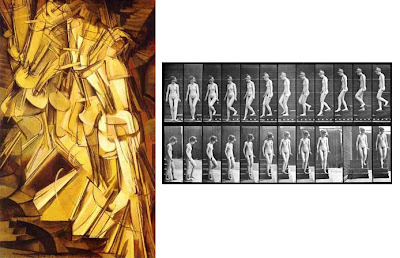(Scroll down for English Translation)Inauguration de l'Espace Jules Verne, le 4 octobre 2008
Maison d'Ailleurs, Yverdon-les-Bains, Suisse

Pour son inauguration, l'Espace Jules Verne à Yverdon-les-Bains sera accessible gratuitement de 10h30 à 22h30 pour douze heures de rencontres, de visite et de découvertes. Cette salle historique en plein centre ville présentera ses nouveaux atours au public et ses collections exceptionnelles autour de Jules Verne: documents rares, livres précieux, modèles des véhicules extraordinaires, audio-visuels originaux, borne interactive sur les voyages littéraires, affiches dans un incroyable présentoir automatiqueŠ

10h30 Partie officielle en présence des autorités d'Yverdon-les-Bains, du collectionneur Jean-Michel Margot et de l'artiste américain James Gurney (place Pestalozzi). Dans Retour à Dinotopia, plus de cinquante nouveaux tableaux donnent vie à un lieu hors du temps où dinosaures et mammifères préhistoriques sont représentés avec une rigueur toute scientifique.

Toute la journée, animations sur la place Pestalozzi avec les Orbylis et les envoyés du Yuocland... Ainsi que le superbe Gramoulinophone, un spectacle rétrofuturiste et décalé (représentations à 13h, 14h30, 16h30, 18h - entrée libre).

L'ouvrage Dinotopia: un voyage à Chandara (Editions Fleurus) paraît pour l'ouverture de l'exposition à la Maison d'Ailleurs.
Paris mercredi 8 octobre 2008 à 16h: Dédicace de James Gurney pour son ouvrage "Dinotopia, un voyage à Chandara" (Fleurus). FNAC Paris - Forum (Châtelet les Halles)
 ENGLISH
ENGLISH The new extension of Maison d'Ailleurs (Museum of Utopias and Science Fiction), in Yverdon, Switzerland, is devoted to Jules Verne, the father of Extraordinary Journeys and his time. The new museum building will open on October 4th, from 10:30 to 22:30 for 12 hours of discoveries and amazement. This historical room in the old center of Yverdon-les-Bains will house rare documents, extraordinary models, precious books, films and interactive works, an incredible poster-matic machine and much more. The entry is free for the whole day.
10h30: Official opening with the Yverdon-les-Bains authorities, collector Jean-Michel Margot and Dinotopia artist James Gurney, to accompany the exhibit “Return to Dinotopia,” with 50 paintings on exhibit from the new book, Dinotopia, Journey to Chandara, which will be released in its French edition the same day. (Pestalozzi plaza)

During the whole day, street performers, musicians, and actors will make the day unforgettable. Meet the strange Orbylis aliens, and the emissaries from distant Yuocland... And enjoy the weird Gramoulinophone, a retro-futuristic wonder (playing at 13h, 14h30, 16h30, 18h - free entry).
-------
Maison d’Ailleur, Oct. 4 agenda,
link. Dinotopia exhibition info, text in
English or
FrenchStreet performers,
link.Yuocland,
link.Orbylis,
link.Gramoulinophone,
link.Previous GJ post on Maison d'Ailleurs,
link.
 Not many people know about the subterranean hangars. The steam dirigible took us into the clouds. It was a strange crowd on board—many unintelligible languages.
Not many people know about the subterranean hangars. The steam dirigible took us into the clouds. It was a strange crowd on board—many unintelligible languages. The coffee on board was dark and chocolaty, with a wood-fire taste, served by flight attendants who were mountain trolls, a bit grumpy.
The coffee on board was dark and chocolaty, with a wood-fire taste, served by flight attendants who were mountain trolls, a bit grumpy. In Geneva our dwarf guide took us down the back alleys, where you can still see the occasional “granchat.” They block traffic until they wake up.
In Geneva our dwarf guide took us down the back alleys, where you can still see the occasional “granchat.” They block traffic until they wake up. A goat man brought us firewood on this brouette, which was parked at the base of the stairs of our stone house.
A goat man brought us firewood on this brouette, which was parked at the base of the stairs of our stone house.


















































